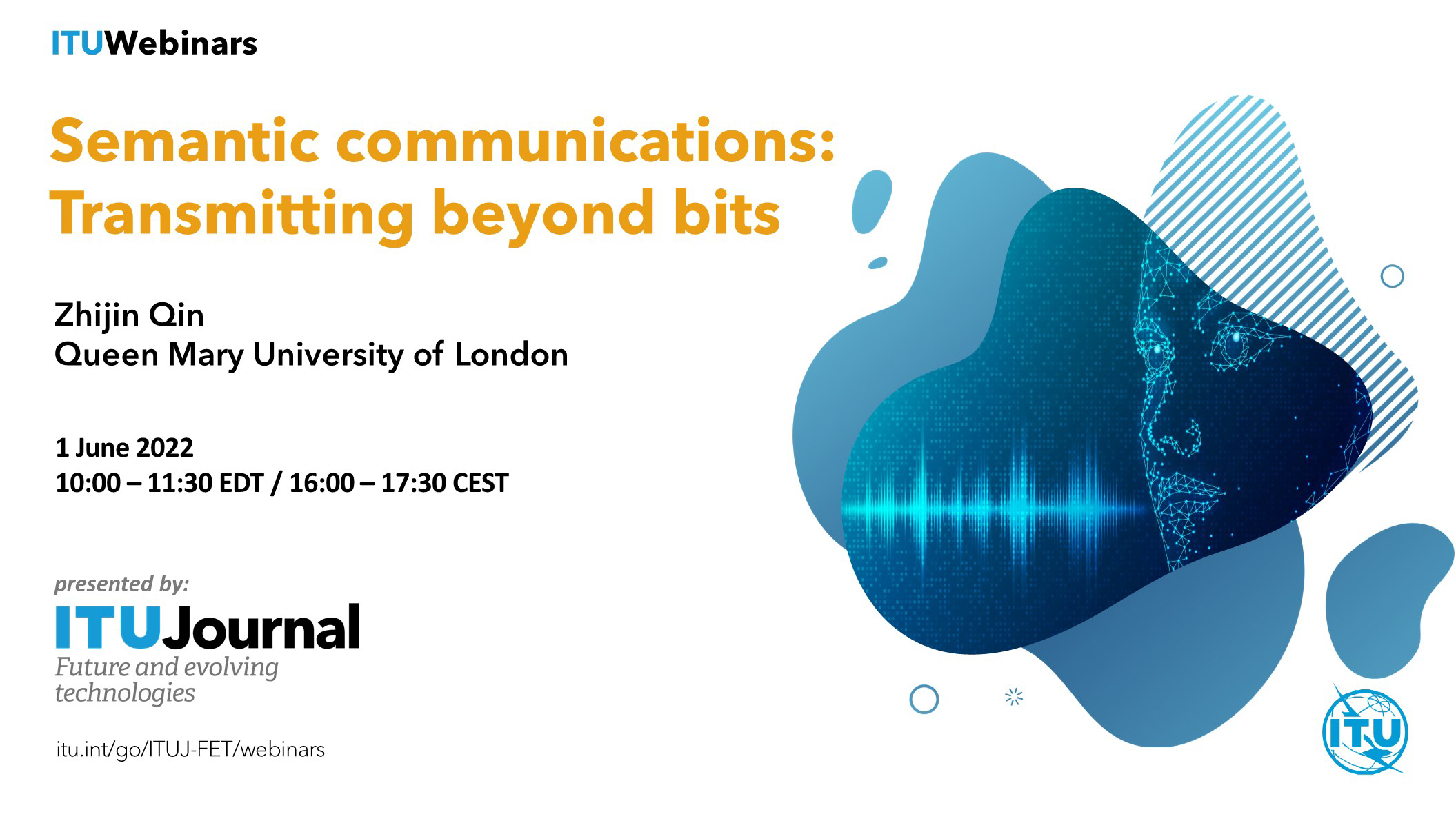
TALK
In the past decades, communications primarily focused on how to accurately and effectively transmit symbols from the transmitter to the receiver, in which bit-error rate or symbol-error rate is usually taken as the performance metrics. With the developments of cellular communication systems, the achieved transmission rate has been improved tens of thousands of times and the system capacity is gradually approaching to the Shannon limit. Inspired by powerful deep learning technologies, semantic communications have been regarded as a promising solution to further improve the system efficiency, which is recognized as the second level of communications by Shannon and Weaver. Semantic communications aim to realize the successful semantic information exchange rather than receive the transmitted bit sequences or symbols accurately. In this webinar, the concept of semantic communications was introduced first. Afterwards, the recent work on deep learning enabled semantic communications was discussed. Potential research challenges were discussed at the end of the talk.
WISDOM CORNER: LIVE LIFE LESSONS
Participants had the chance to hear from Professor Qin about her impactful life lessons over the years as well as her advice to young researchers in the field of information and communication technologies.
|
SPEAKER: Zhijin Qin, Queen Mary University of London, UK
Dr. Zhijin Qin received her B.S. degree from Beijing University of Posts and Telecommunications in 2012, and the Ph.D. degree on Electronic Engineering from Queen Mary University of London (QMUL) in 2016. She was a Postdoctoral Research Associate at Imperial College London from 2016 to 2017, and then a Lecturer at Lancaster University from 2017 to 2018. Since 2018, she has been a Lecturer with the School of Electronic Engineering and Computer Science at QMUL.
Her research interest includes deep learning enabled semantic communications, end-to-end communications, deep compressive sensing, intelligent resource allocation in various applications, such as UAV communications and reconfigurable intelligent surface. She is serving as an area editor of IEEE JSAC Series on Communications and Networks, an associate editor of IEEE Transactions on Communications, IEEE Communications Letters, and IEEE Transactions on Cognitive Communications and Networking. She has served as the track-chair for IEEE VTC fall 2019, IEEE GLOBECOM 2020.
|

|
MODERATOR: Ian F. Akyildiz, ITU J-FET Editor-in-Chief and Truva Inc., USA
|
WATCH RECORDING